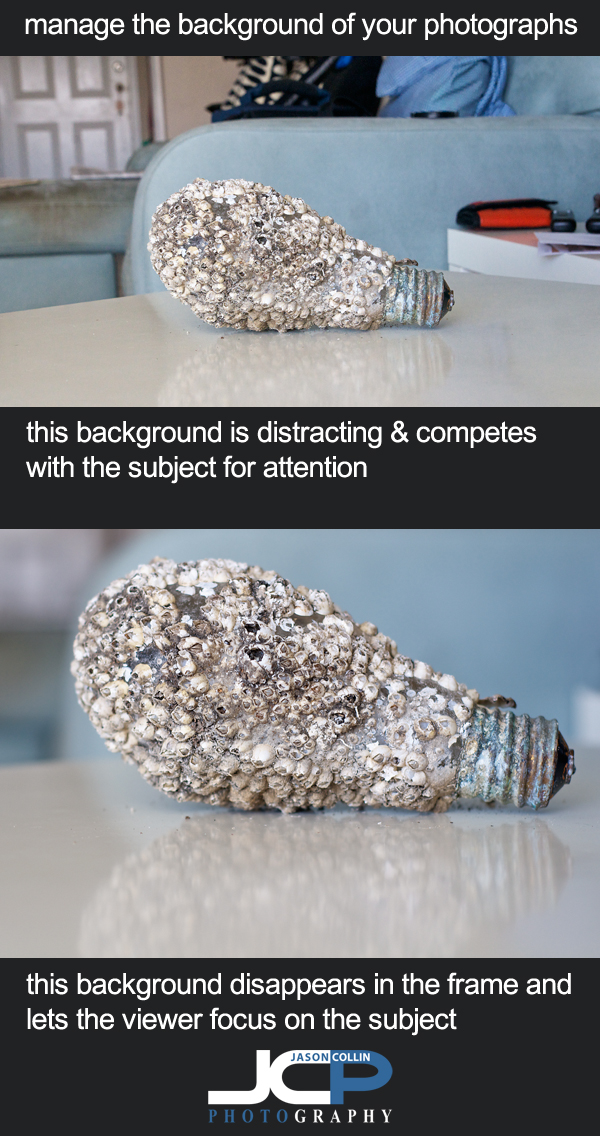
This week's photography tip deals with the background of photographs. The background is one of three things that makes or breaks any photograph. In the examples above, I sat in the exact same spot to make each photograph. In the top example much of the background is visible and in varying degrees of focus. The subject is sharp and well exposed, but despite that the background still distracts from it. Plus, the subject is not big enough in the frame either.
For the second shot, I used a different lens, different settings, and different composition to make the background as much of a nonfactor as possible, and for the background to even try and complement the subject. Having a clean background allows the viewer to focus only on the intended subject of the photograph.
How the difference was accomplished:
- 17-50mm f/2.8 lens switched to 50mm f/1.8 lens
- 38mm focal length to 50mm
- f/8 to f/2.8
About this subject . . . it is a large light bulb that I found floating in the water behind my apartment one morning. It is encrusted with barnacles. It fascinates me how something as fragile as a light bulb could survive in open water long enough to number one become barnacle encrusted and second to not simply have shattered. I keep it on a bookshelf in my living room as a reminder of how interesting the world is and how such extraordinary things are possible.

